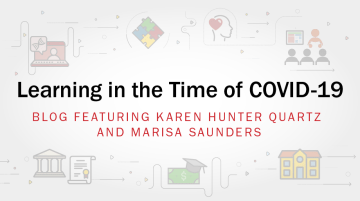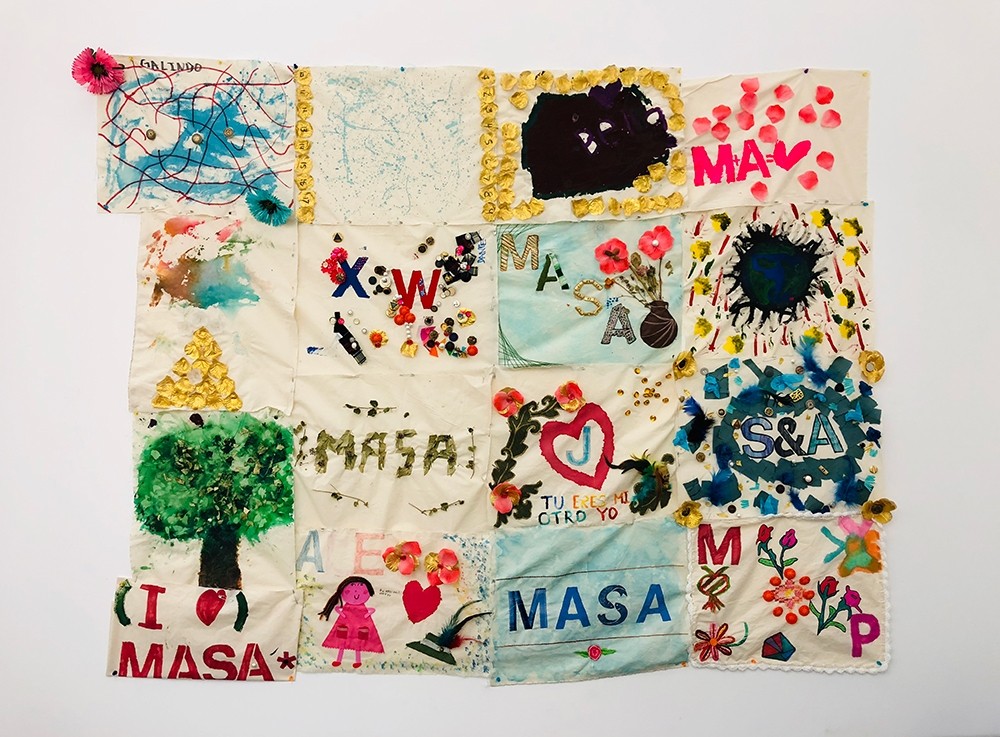Community-Based Learning in the Time of COVID-19

This post is part of LPI's Learning in the Time of COVID-19 blog series, which explores evidence-based and equity-focused strategies and investments to address the current crisis and build long-term systems capacity.
Horace Mann called public education “the cornerstone of our community and our democracy.” Community schools across the nation are rising up to meet the challenges of the COVID-19 pandemic because they were designed to be these cornerstones. Alongside the inspiring stories of distributing meals, social services, and technology to families in need right now, community schools are also enabling students to understand and confront the structural inequalities they encounter each day—the very inequalities that are causing Black and Latino Californians to die of the coronavirus at disproportionate rates.
To accomplish this, community school teachers work to create opportunities for engaged and rigorous learning rooted in the assets and needs of the community. They build deep relationships with students—which is key to learning and development—but they also do much more. They construct curricula to develop students’ identified strengths and to equip students with the knowledge and skills to address problems facing their communities.
Before the pandemic, for example, teachers at the UCLA Community School were preparing their students to launch interdisciplinary projects on issues affecting their community, as part of the school’s Multilingual Interdisciplinary Social Action (MISA) unit. Now in their third year of development, these projects have tackled homelessness, gentrification, and climate change, among other topics. Students conduct research in their home languages and present what they learn about social change to the community.
As schools closed and learning shifted from in-person to online, coordinating cross-curricular MISA projects became unfeasible. Teachers, however, have pivoted to create and implement community-based learning projects that address issues currently affecting students’ lives—and that can be accomplished in a distance-learning setting.
In Ayuri Terada’s 11th-grade history class, for example, students are engaged in a 10-week inquiry process in which they investigate the disparate impact of COVID-19 on communities of color and the response of local students, teachers, and parents who have organized to work for justice in and beyond schools. Reading articles and reviewing current data, videos, and the latest research on the virus, students are asked to reflect deeply on and share how these issues are affecting them, their families, and their communities. Students are guided by the words of the late educator and philosopher Paulo Freire: “In problem-posing education, people develop their power to perceive critically the way they exist in the world with which and in which they find themselves; they come to see the world not as a static reality, but as a reality in process, in transformation.”
While teachers continue to tackle the many challenges school closures have introduced, our work with the UCLA Consortium of Community Schools is highlighting the efforts of community school teachers, such as Ms. Terada, who are continuing to engage students in learning about themselves and the world around them. These relevant and engaging lessons contribute to students valuing who they are, and to their becoming positive and contributing members of society.
For example, at Horace Mann UCLA Community School, Shriya Venkatesh has adjusted her community-based science unit on waste and plastic pollution in South Los Angeles to focus on environmental justice in the community more broadly. Using street maps and real-time interactive tools, students engage with and analyze local data and discuss how their lives and their communities are impacted by waste, pollution, and other environmental issues. Ms. Venkatesh has also created a “landfill” within a box in her home that is filled with food waste, paper, and plastic, and the class is collecting data and observing how these materials break down over time. Parents have been invited to the class (via Zoom) as “expert” speakers to share their household plastic use and recycling practices and discuss how they see waste pollution affecting their community. Together, students, families, and community members are identifying how they can work to combat pollution issues, including changes to city policies and practices.
Community school partners are also stepping up to provide engaging instruction and activities. Raymundo Baltazar, a UCLA teaching artist and community engagement coordinator, runs the Multigenerational Afterschool Arts (MASA) program each Wednesday afternoon during the regular school year. A model of culturally sustaining pedagogy, MASA’s co-constructed curriculum engages 30–40 students of all ages in art-making that honors their home culture and lived experience as immigrants. After the 2016 election, for example, MASA participants joined in a community circle to share their collective fear and then created artistic representations of what sanctuary meant to them. These art projects were assembled to create a Sanctuary Quilt, which hangs in the school’s Immigrant Family Legal Clinic. In response to families’ heightened concerns about deportation, wage theft, health care benefits, and evictions during this COVID-19 crisis, the legal clinic is holding online information sessions and distributing flyers during the morning Grab and Go food distribution. The MASA families are also meeting virtually to make art together—using supplies distributed at the Grab and Go.

While COVID-19 is amplifying long-standing and persistent social inequities tied to race, class, and immigration status, community schools in Los Angeles and around the country can assist in disrupting these realities. As Darlene Tieu, a teacher at Horace Mann UCLA Community School, commented, “We continue to work to meet students where they are, retain high expectations, and provide them with the quality education they deserve…That means providing the knowledge and skills they need for the next grade, college, and beyond, and teaching how to advocate for community change.”
As Ms. Tieu reminds us, we must acknowledge and embrace the role of students in disrupting the inequality fueling the COVID-19 crisis. Together, with the next generation, community schools can help us realize the goals of public education as the cornerstone of our democracy.
Karen Hunter Quartz and Marisa Saunders are Director and Associate Director for Research, respectively, of the UCLA Center for Community Schooling.
